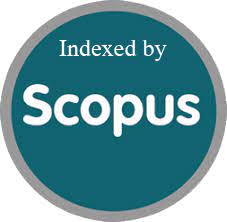Early Reoperations after Primary Repair of Jejunoileal Atresia in Newborns
DOI:
https://doi.org/10.52783/jns.v5.315Keywords:
Jejunoileal atresia, Primary resection and anastomosis, ReoperationAbstract
Aim: To review nine-year experience in managing jejuno-ileal atresia (JIA) by primary resection and anastomosis and identify factors associated with reoperations.
Methods: From April 2006 to May 2015, all consecutive neonates who underwent bowel resection and primary anastomosis for JIA were analyzed retrospectively. Patients with temporary enterostomy were excluded. Patient demographics, types of atresia, surgical techniques, need for reoperations, and long-term outcomes were investigated.
Results: A total of forty-three neonates were included, in which nineteen (44.2%) of them were preterm and fourteen (32.6%) were of low birth weight. Thirteen patients (30.2%) had jejunal atresia whereas thirty patients (69.8%) had ileal atresia. Volvulus, intussusception and meconium peritonitis were noted in 12, 8, and13 patients, respectively. Eight patients (18.6%) had short bowel syndrome after operation. Ten patients (23.3%) required reoperations from 18 days to 4 months after the initial surgery due to anastomotic stricture (n=1), adhesive intestinal obstruction (n=1), small bowel perforation (n=2) and functional obstruction (n=6). Prematurity and low birth weight were associated with functional obstruction leading to reoperation (p=0.04& 0.01 respectively). The overall long-term survival was 97.7%. All surviving patients achieved enteral autonomy and catch-up growth at a median follow-up of 4.7 years.
Conclusion: Long-term survival of JIA after primary resection and anastomosis are excellent. However, patients have substantial risk of early reoperations to tackle intraabdominal complications.
Downloads
Metrics
Downloads
Published
How to Cite
Issue
Section
License
You are free to:
- Share — copy and redistribute the material in any medium or format
- Adapt — remix, transform, and build upon the material for any purpose, even commercially.
Terms:
- Attribution — You must give appropriate credit, provide a link to the license, and indicate if changes were made. You may do so in any reasonable manner, but not in any way that suggests the licensor endorses you or your use.
- No additional restrictions — You may not apply legal terms or technological measures that legally restrict others from doing anything the license permits.










